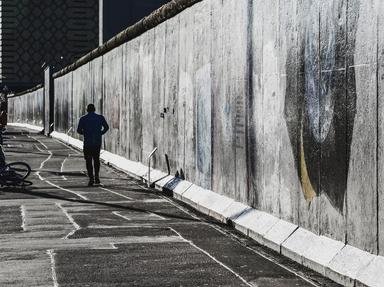Quiz Answer Key and Fun Facts
1. From October 23 to November 10, 1956, a revolution against the régime took place in one of the Warsaw Pact countries of Eastern Europe. What followed was a Soviet invasion and a suppression of the revolution. Both of the revolutionary leaders, Imre Nagy and Pal Maleter, were executed. Where did those incidents happen?
2. During the course of the Cold War, there were not many instances where the United States and the Soviet Union collaborated in their efforts. In one such instance, in the second half of 1956, they, with the aid of the United Nations, forced Israel, Britain and France to remove their troops from which country?
3. On the night of August 20-21, 1968, Czechoslovakia was invaded by the Warsaw Pact. The invasion was in response to reforms being carried out by the government of Czechoslovakia which liberalized the system of government. Who was the leader of Czechoslovakia, whose tenure was abruptly broken by the invasion?
4. One of the most brutal and bloody conflicts of the Cold War was the Soviet invasion of Afghanistan. It raged for ten years, from 1979 to 1989. Over 50,000 pro-Soviet Afghans and just under 120,000 Soviet troops were resisted by 250,000 rebel Afghans. How were those rebels called?
5. Between October 20 and November 21, 1962 India and China clashed in the Himalayas. The outcome of the war, known as the Sino-Indian War, was a Chinese victory. As a result, a border territory previously patrolled by both countries, now became a part of China. Which one?
6. Perhaps the most famous symbol of the Cold War and the world being divided into the two blocs is the Berlin Wall, which was built in 1961 by East Germany under the influence of the Soviet Union. Who was the Chancellor of West Germany when the Wall was built?
7. The Vietnam War is one of the most controversial wars in history, especially when it comes to the American involvement in it. It lasted from 1955 to 1975, ending with the American withdrawal from Vietnam and the fall or the Republic of Vietnam to the Communists. Who was the US President at the close of the Vietnam War?
8. The Korean War was one of the first open wars during the Cold War era. Lasting for over 3 years, it was largely a military stalemate, while being the first war with United Nations troops participating. It began in the middle of 1950, with North Korea invading South Korea. What was the arranged border of the two countries?
9. The Cuban Missile Crisis of 1962 almost led to a Third World War. The Crisis was due to the Soviet equipping of Cuba with ballistic missiles, which could be used to harm the United States. US President John F. Kennedy demanded that the missiles be removed and relocated to the USSR. They were finally withdrawn, as were the US missiles in Turkey and which other country?
10. The murder of the Roman Catholic priest Jerzy Popieluszko on October 19, 1984, shocked the world. The priest, who encouraged opposition to the Communist regime in his sermons, was also associated with the Solidarity movement, headed by Lech Walesa. Who was the Prime Minister of Poland at the time of Popieluszko's murder?
Source: Author
DeepHistory
This quiz was reviewed by FunTrivia editor
bloomsby before going online.
Any errors found in FunTrivia content are routinely corrected through our feedback system.

